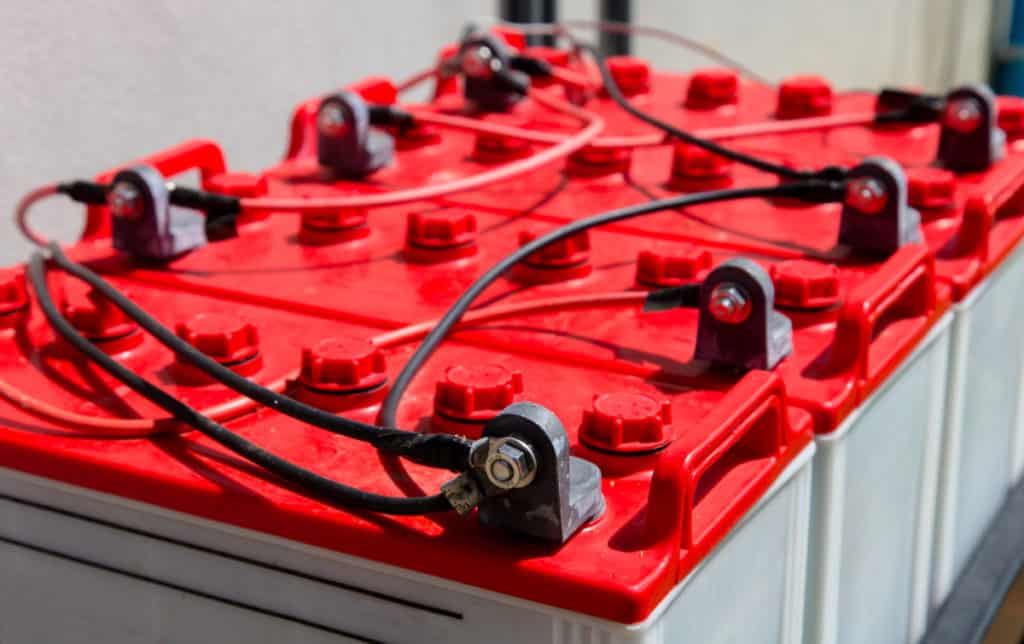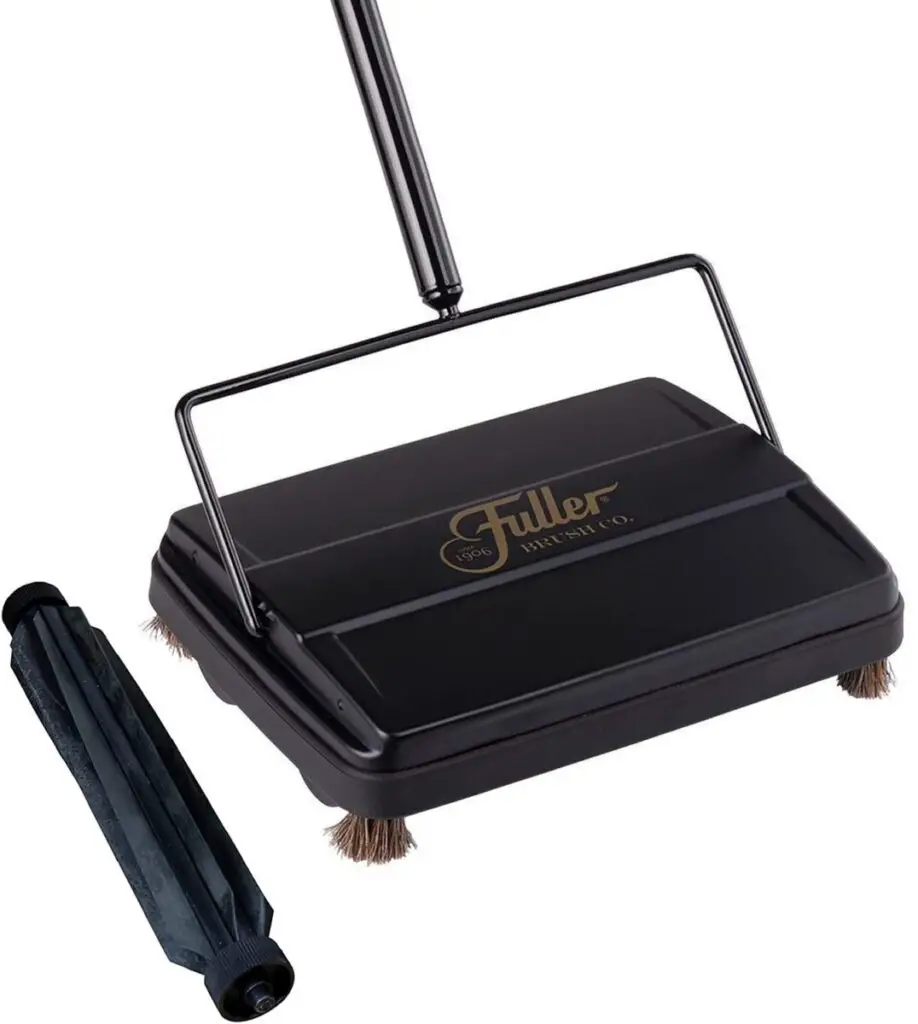How Much Money Do You Need to Live Off-Grid? With 3 Examples
When I think about living off-grid, I think about saving money. But, as soon as I started pricing up some of the necessary equipment, I realized that it can be far from cheap.
Between $60,000 and $100,000 covers most things you will need to get you started off-grid. The exact cost depends on several factors, including the size of the property you are converting and how much of the conversion and installation you can do yourself.
What do you need to live off-grid?
To successfully take your home off-grid and live a self-sufficient lifestyle, you will need to make many expensive changes. It is likely that to convert your current grid-dependent home to standalone, power systems will take lots of time and money. As a result, you may want to consider breaking the conversion into stages and tackling one step at a time over several years.
To complete each of these tasks, you will need the right knowledge, skills, and equipment. The easiest way to achieve this is to employ an expert to complete the job. The alternative option is to learn the craft and complete the work yourself.
To start with, the essential tasks to go off-grid are:
Power Supply
Converting to a standalone power supply begins by conducting a complete review of your power usage. Once you know what you currently use, you can project the future. Many off-gridders attempt to reduce their power consumption when they change systems. This can involve purchasing low power alternatives of your current electrical appliances or creating systems to help you use less power.
Once you know what electrics your new supply will need to support, you can begin to build your supply. Adding a generator to your system will give you a backup in case of an emergency or a long period of reduced light levels.
Click here for my recommended solar power equipment.
Power storage

Whatever the source of power, you will need to have a way to store it. This is especially true for solar or wind power systems. Because the weather is inconsistent, it’s necessary to be able to make use of all the sunlight or breeze you can on one day to produce enough power to be used on still, overcast days. As a result, you will need many batteries or a large backup system unit.
Battery storage for solar panels works by diverting electricity to charge the batteries when you’ve used all the power your home needs. Your cells will continue to charge up from the excess electricity until they are full. If at any point, your home requires more power than is being produced by your panels, such as on a cloudy day, the batteries will supply your home’s power needs.
The number of batteries you need depends on:
- How much power you use daily
- The type of batteries you buy
- How long you want to be able to run your home from the backup
If you want to be able to run your home for a few hours here and there, you won’t need as many cells as if you’re going to rely on them for a week or more during winter.
Water supply
Ideally, you would have a spring or well on your property to supply crystal clear water. However, if you are converting an existing property, it is unlikely that you will have this luxury.
Catching and storing rainwater is a popular way to build up a standalone water supply. If you rely on rainwater, you may want to remain connected to the water utility as a backup in case of emergencies.
To use rain as your water supply, you will need to find a way of catching and storing nearly every drop that falls on any area of your property. This might involve giant open water butts, buckets, containers, and guttering.

Once the water is collected, you may want to keep it in a large storage tank, which can then supply your house. Before you use the water, you will need a water filtration system to make it clean and safe. To make use of every drop, some people also collect some wastewater (greywater) to be filtered, cleaned and reused for a secondary purpose.
Click here for my water supply and plumbing equipment recommendations.
Food
Many people deal with this issue at the last minute, but this is something that works best the sooner you set it up. The sooner your land begins to produce food, you can start turning it into a form that can be preserved and stored for the future.
It’s perfectly fine to augment any of your homegrown supplies with supermarket produce for as long as you need, but the earliest you can get your land producing, the less time you will have to wait. Preparing your garden to provide as much as possible is time-consuming and requires lots of energy and a detailed plan. You may need to reorganize landscape elements to make production as efficient as possible.

To get everything set up, you will need plants/seeds, garden tools, fertilizer, and water supply. If you create a carefully balanced system such as that taught in permaculture or forest garden systems, you can create your compost and water supply within your property.
Any livestock or poultry will need housing, equipment, food, and upkeep. Chickens are a favorite on off-grid homesteads because they are easy to keep, reasonably priced, and they can supply both eggs and meat.
Related reading: How to keep chickens, How much land do you need to be self-sufficient?
Toilets and sewerage
Many homes disconnect their power from the grid but keep their sewage connection. This is because the mains sewerage is convenient, and setting up an alternative can be complicated and expensive. If you do decide to take your sewerage off-grid, one of the most popular ways of dealing with wastewater is to have a septic tank.
A septic tank is a large submerged container that collects the waste, separates the water from any solid, and releases it into the soil. Some off-gridders use compost toilets to deal with blackwater waste and then a system to collect clean and reuse any greywater from showers and sinks etc.
You can buy composting toilets as self-contained units, or you can build your own:
A source of income
As you can see, these changes are likely to cost a lot. Unless you have been saving up for years to fund your of-grid conversion, you will need a source of income. Some people continue their current job and manage the transformation in their spare time. Others make their off-grid lifestyle bring in a profit by selling produce they’ve grown on their homestead.
How you do this has a massive impact on how much going off-grid will cost. If you are away at work all day, you may have less time to do the work yourself. If you aren’t working and decide to do everything yourself, you will need to pay out for training, equipment and you will be responsible for any upkeep.
What is the cost of living off-grid?
The initial cost of converting your house to becoming an off-grid haven is going to be the largest. Nearly everyone who wants to take the leap to go off-grid has a different idea of what it means to them. To give you an idea of what the cost to you could be, I’ve created examples of the costs for different situations:
These are approximate costs to provide you with an idea of the expenses you might face.
Example 1- Going off-grid on a budget
- 2kw solar panel system $6,000- This should be enough to produce power for a small home of 3 people, if run efficiently. About 14m2 of solar panels. 1,800kWh electricity generated annually.
- Bank of 4 batteries $1,500
- Petrol backup generator $300
- Rainwater collection guttering, butts, storage tank, water filter $600
- 2 x DIY composting toilets $300
- Chickens 6 point of lay girls, simple coop and equipment, food, etc. $300
- Setting up a no-dig forest garden -fruit trees, plants, seeds, basic equipment, fencing, mulch, compost, and fertilizer to get started $1000 – Most money here will go on planting. If you buy more mature plants, the quicker your garden will produce crops you can use. Ideally, you want about half an acre for this, but permaculture is a great way to get the most out of any space.
Total-$10,000

Ongoing costs: Once you are completely set up, there will be minimal ongoing costs including maintenance costs and food for the chickens. However, remember that as you complete the conversion, you may still be paying portions of utility bills or buying enough food to keep you going until you are self-reliant.
To be completely self-sufficient is a long process, so you may need to budget for extra purchases to top up food and groceries.
Example 2 – Medium budget
- 5kw solar panel system $15,000- A 5kw system should be enough to produce power for a medium-sized family and provide enough power for your basic needs, including washing machine, water heater, refrigerator, oven, and a small number of lights.
- Bank of 12 v back up batteries $5,000 – To have a decent sized back up in case of emergency, you may want to store at least five days’ worth of power. The number of batteries you need will vary greatly depending on the size of your system. A good 12v battery can cost you about $300 each, and you should set aside enough to batteries and other hardware such as wiring and an inverter.
- Low to mid-range long-running diesel generator $2000
- Rainwater collection gutters, underground cistern, filter, pressurized tank $6,000 plus installation
- Basic septic tank $2,500 plus extras incurred while installing (hiring earthmoving equipment etc.)
- Chickens 6pol girls, easy clean coop, ratproof feeders, equipment, and food, etc. $600
- Setting up a forest garden $3000- To get the most out of your space and get quick results, you can redesign and landscape your garden, to optimize it for year-round crops. Buying mature plants will allow you to see results within the first year. Most money here will go on planting.
Total- $34,100
Ongoing costs:
- Some maintenance required
- General groceries
- Extra food items
- Fuel for the generator
Example 3 – Large home

- 10kw solar panel system $30,000– This system will require lots of space for panels but will provide enough for a large home, or a medium home with a large family and heavy power use.
- 2 x Tesla Powerwall 2.0 batteries with built-in inverters $14,000
- Long-running diesel generator $5000
- Large rainwater collection system gutters, underground cistern, filter, pressurized tank $10,000
- Average sized septic tank $5,000 plus extras incurred while installing (hiring earthmoving equipment etc.)
- Chickens 6 point of lay girls, easy clean coop, ratproof feeders, equipment, and food, etc. $600
- Setting up a half-acre forest garden $6000 – Forest gardens work best when carefully designed to allow for maximum interaction between plants. If you get this right, you will have very little to do to keep a year-round harvest in abundance. You can spend the time to do this yourself or hire a permaculture or forest garden designer.
Total- $70,600
Ongoing costs:
- Fuel
- Maintenance
- Extra food items
- General groceries
- Equipment servicing
What other costs are there?
On top of the initial cost to set up your off-grid home, there are other things to consider in the long term. Some of them will need to be paid monthly, but others only come up when equipment gets old and needs replacing:
- Replacement batteries –Most batteries need replacing every few years. If you treat them carefully and store them in the right conditions, you will get more use out of them.
- Replacement solar panels- After about 25 years, solar panels can become less efficient and may provide you less power than you need.
- Gasoline/Diesel- Fuel and oil will be needed for your vehicles and generators.
- Equipment and vehicle maintenance – When you embark on an off-grid lifestyle, your comfort and survival begin to depend on your ability to keep your equipment, tools, and devices working efficiently. This means regular services and maintenance. Even if you can do this yourself, you may need to pay for replacement parts.
- Taxes- Wherever you live, it is likely that you will still be required to pay some form of land tax and income tax.
- Healthcare- It’s always important to have savings or insurance ready in case you require healthcare.
- Insurance- These are often necessities for a vehicle, home, and even for yourself.
- General groceries, cleaning products, clothes – Even if you consistently recycle and reuse, you will be surprised at the general products you may still need to buy.
Conclusion
Getting to grips with how much taking you home off-grid is going to cost you can be overwhelming, it was for me. The numbers here are a rough guide, but they will give you an idea of the size of the financial commitment going off-grid can be.
If the amount of money here makes you go weak at the knees, break it down into stages and spread it over several years. That way, it is more manageable, both financially and physically.
You will only get an accurate picture of how much your off-grid journey will cost you when you start planning and begin to cost up each item. Each home is vastly different, and your off-grid dream may not match anyone else’s.
Before you start the process of going off-grid, it is essential to price everything up accurately. Take the time to get it as specific as possible, so you don’t run out of money halfway through the conversion.
Check out my recommendations for equipment that will help you take your home off-grid.
My Off-Grid Product Recommendations

Useful Book: Off Grid Living 2022-2021 – This incredible step by step guide is a great read and gives you useful information about reaching self-sufficiency in just 30 days. Get the paperback on Amazon or read it free with a Kindle Unlimited subscription or listen to the audio version with Audible Plus membership.

Small Solar Panel Systems: Silicon Solar – This is an excellent company that offers lots of products to get you started on your solar journey. Visit Silicon Solar.

Family Water Filter: Big Berkey – For a fast, affordable water filter with no plumbing required, you can’t beat a Big Berkey gravity-fed filter like this one from Amazon.

Canning Equipment – This canning starter kit, 22-quart Barton pressure canner and twelve-pack of Ball 16oz mason jars will help you preserve food as you work towards self-sufficiency.

Cleaning: Fuller Carpet Sweeper –. This carpet sweeper is an ideal way to keep your home clean without using up your energy stores on vacuuming.

Handy Knife: Gerber Serrated Paraframe – This handy all-purpose knife is lightweight and ideal for all those little jobs around your home and garden.








